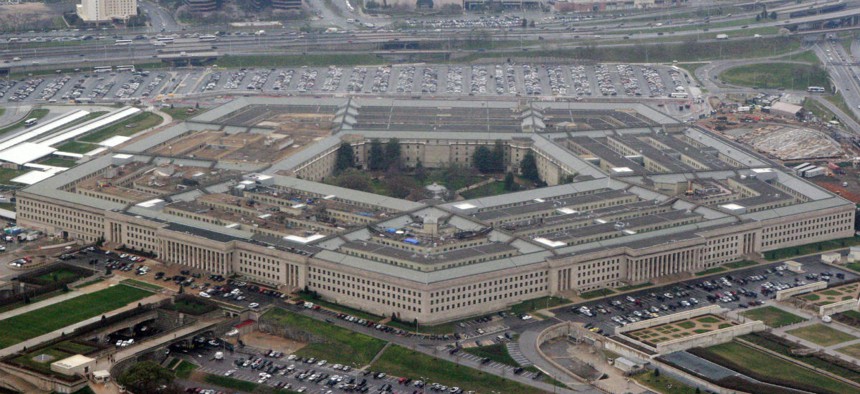What's In Pentagon Newly Released IT Vision?

Charles Dharapak/AP
The document itself largely builds on existing policy initiatives, binding them together “in a new way of thinking” through 10 primary goals.
The Defense Department has reprioritized its goals as they relate to the future of information technology and packaged them together in a document released this week.
Called the “Way Forward to Tomorrow’s Strategic Landscape,” DOD’s new vision includes everything from cloud computing and cybersecurity to closing data centers and ensuring DOD’s mix of largely legacy systems still allows warfighters access to data they require.
» Get the best federal technology news and ideas delivered right to your inbox. Sign up here.
The document itself largely builds on existing policy initiatives, binding them together “in a new way of thinking” through a series of 10 primary goals. The crux of the document is built on the best possible mixing of the old—complex legacy systems—with “game-changing, yet proven technologies and capabilities that will position DOD’s IT infrastructure and processes for broad impact, greater security in a mission- and cost-effective way.”
First priority is the execution of the Joint Information Environment—DOD’s modernized IT infrastructure of the future. The Pentagon came under scrutiny recently from the DOD Office of the Inspector General for lacking a management plan for JIE.
The “Way Forward” initiative emphasizes the importance of implementing the Joint Regional Security Stacks—regionally-based, centrally-managed suites of network security appliances, according to the document—in a push from component-centric to enterprisewide operations.
Cloud computing figures heavily into the aforementioned game-changing technologies, with DOD outlining plans for an on-premises shared cloud environment by the close of 2017. DOD currently has pilots with commercial cloud providers storing sensitive unclassified data, and will expand investment in its private on-premises cloud, milCloud.
Data center closures and optimization figure heavily into the document, too. The document calls for the creation of a data center closure team “to assess and recommend closures of the costliest and least-efficient facilities beginning in the first quarter of fiscal year 2017.” Data centers have been a challenging IT issue for DOD and military components for technical and personnel reasons.
Other key areas addressed in “Way Forward”: improve industry partnerships; ensure successful mission execution in the face of the cyberthreat; exploit the power of information sharing; provide resilient communications and network infrastructure; and improve oversight and execution of DOD IT investments.






